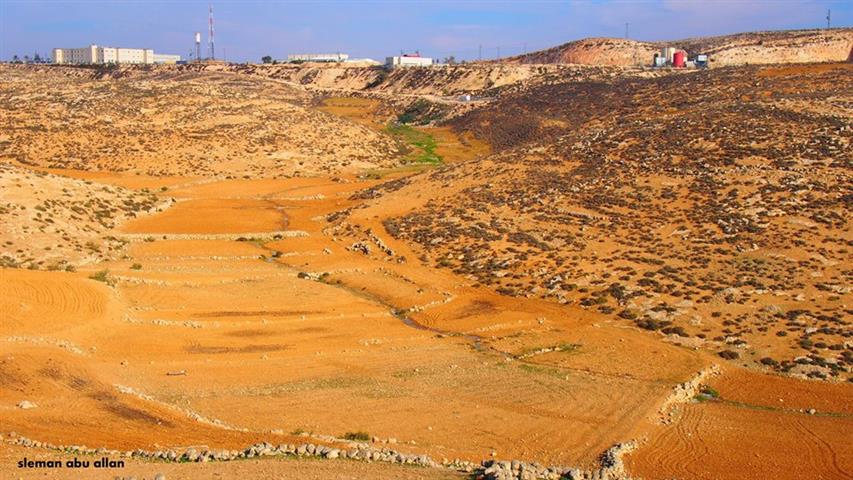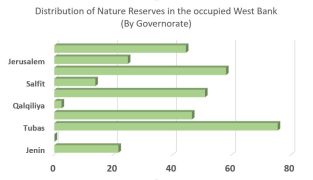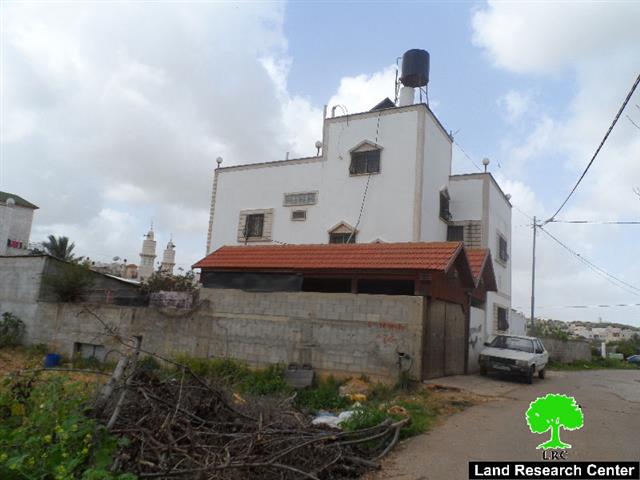- Violation: expanding at expense of Palestinian lands
- Location: Zanuta hamlet- Al-Dhahiriya town
- Date: during 2016
- Perpetrators: Mitarym colonists
- Victims: Al-Til family
Details:
Farmers and citizens from Zanuta hamlet complained and suffered from wastewater pumped into their agricultural lands from Mitarym industrial zone.
Affected citizens asserted that the wastewater hinders them from accessing their lands for plowing and cultivating purposes.
Established in the eighties, Mitarym is located atop of a mountain that is opposite to Zanuta hamlet. The industrial zone is reported to accommodate several factories including detergents and oil factories. Over the past five years, the aforementioned factories were reported to pump wastewater into Palestinian lands, causing pollution and huge losses.
Photos 1+2: signs of wastewater in farmers lands
It should be marked that the wastewater runoff is of 1km in length and three meters width; it travels through Al-Til family fields of winter crops.
Citizen Asir Al-Til pointed out the difficulty farmers face when plowing their lands and moving tractors to do the job in the fields, clearing out that rate of wastewater vary from time to time.
It is reported that colonists ravaged on February 2015, lands belonging to AL-Til family that are founded to the south of the industrial zone. For further information, please read Land Research Center report issued in that regard (LINK)
The solar panels relative to the colony took an area of 40 dunums from the hamlet's lands. The industrial zone is also witnessing an expansion represented in a building of 1000m2 in area.

Photos 3-5: ravaging works on Mitarym on February 2015
Photos 6-8: the area covered by solar panels on March 2016
Residents of Zanuta have always complained about the emissions and bad odors that come out from the nearby factories, indicating a difficulty in breathing they encounter when wind comes from the east.
Photo 9: a general view of the industrial zone
Zanuta hamlet is located to the south of Al-Dhahiriya town and populates around 100 people from eleven different families, who depend on agriculture and livestock as means to sustenance.
It should be marked that the area lacks water and roads networks. Some families use solar panels to get electricity where others use generators.
Prepared by
The Land Research Center
LRC






















